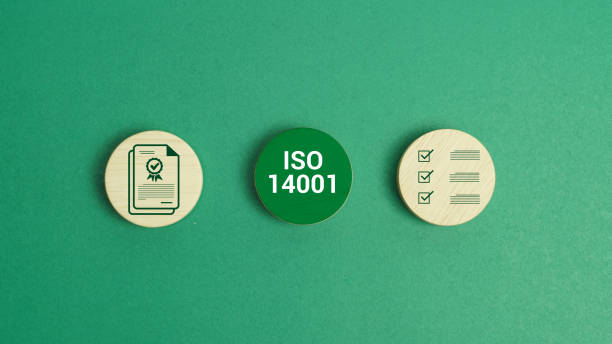I. Introduction to ISO 14001 Certification
A. Overview of ISO 14001 and its purpose.
ISO 14001 is an internationally recognized standard for environmental management systems (EMS), providing a framework to help organizations improve their environmental performance. The standard focuses on minimizing environmental impact through efficient resource use, waste reduction, and adherence to legal and regulatory requirements. Its purpose is to guide organizations in integrating sustainable practices into their operations while demonstrating a commitment to environmental stewardship. By adopting ISO 14001, businesses can systematically identify and address environmental challenges, contributing to a more sustainable future.
II. Benefits of ISO 14001 Certification
A. Reducing environmental impact and operational costs.
ISO 14001 provides organizations with a structured framework to minimize their environmental impact while achieving greater operational efficiency. By identifying and addressing sources of pollution, optimizing resource use, and implementing sustainable practices, businesses can significantly reduce their carbon footprint. Additionally, these efforts often lead to cost savings by cutting energy consumption, lowering waste disposal expenses, and improving overall efficiency. A commitment to reducing environmental impact not only supports sustainability goals but also demonstrates a forward-thinking approach to managing operational challenges.
B. Improving Resource Efficiency and Waste Management
One of the core principles of ISO 14001 is the efficient use of resources to achieve environmental and economic benefits. Organizations are encouraged to adopt practices that optimize energy and material usage, reduce waste generation, and implement effective recycling programs. By integrating resource efficiency into daily operations, businesses can enhance their productivity while conserving natural resources. Improved waste management processes, such as segregation, recycling, and responsible disposal, further contribute to sustainability efforts, ensuring compliance with environmental regulations and reducing the burden on landfills.
III. Steps to Achieve ISO 14001 Certification
A. Conducting an initial environmental review.
The journey to ISO 14001 certification begins with a thorough review of the organization’s current environmental practices. This involves identifying key activities, processes, and operations that impact the environment and assessing compliance with applicable laws and regulations. An initial review helps organizations pinpoint areas where improvements can be made, such as resource consumption, waste generation, or emissions. By establishing a baseline, this assessment provides valuable insights into the environmental risks and opportunities that will shape the development of an effective Environmental Management System (EMS).
B. Developing an EMS Tailored to the Organization
Once the environmental review is complete, the next step is to design and implement an EMS that aligns with the organization’s specific goals, processes, and industry requirements. This involves setting clear objectives, defining roles and responsibilities, and developing policies and procedures that promote sustainability. The EMS should address key areas such as resource efficiency, pollution prevention, and compliance management. Organizations should also establish metrics to monitor progress and ensure continuous improvement. A tailored EMS not only meets ISO 14001 requirements but also integrates seamlessly into the organization’s overall operational strategy.
C. Preparing for Audits and Achieving Certification
The final stage involves preparing for the external audit, a critical step in achieving ISO 14001 certification. This process begins with conducting internal audits to identify gaps and ensure that the EMS is effectively implemented. Training employees and raising awareness about the certification process are essential for ensuring readiness and compliance. Once the system is fully operational, an accredited certification body will perform a formal assessment to verify adherence to ISO 14001 standards. Successful completion of the audit results in certification, demonstrating the organization’s commitment to environmental management and opening opportunities for enhanced credibility and market positioning.
IV. The Role of Leadership in ISO 14001 Implementation
A. Setting environmental policies and objectives.
Leadership plays a pivotal role in driving the successful implementation of ISO 14001 by establishing clear environmental policies and objectives. These policies serve as a foundation for the organization’s commitment to sustainability, outlining priorities such as reducing environmental impact, optimizing resource use, and ensuring regulatory compliance. Effective leaders set measurable and achievable goals that align with the organization’s operations and values. By providing direction and purpose, leadership ensures that all employees understand the importance of environmental management and their role in achieving the organization’s objectives.
B. Engaging Stakeholders in Sustainability Efforts
Leaders are instrumental in fostering collaboration among stakeholders to promote sustainability initiatives. This involves engaging employees, suppliers, customers, and community members in meaningful ways to support environmental goals. Leadership ensures open communication, creating opportunities for input and feedback, which helps build a collective commitment to sustainability. By actively involving stakeholders in decision-making and promoting shared accountability, organizations can achieve more impactful and enduring results. A collaborative approach enhances relationships and strengthens the organization’s reputation as a socially and environmentally responsible entity.
V. Environmental Risks Addressed by ISO 14001
A. Mitigating pollution, emissions, and waste.
ISO 14001 provides a robust framework for organizations to reduce pollution, control emissions, and manage waste effectively. By identifying key environmental impacts, organizations can implement strategies to minimize air, water, and soil pollution. This includes adopting cleaner technologies, optimizing processes to reduce emissions, and establishing efficient waste management systems such as recycling and responsible disposal. These measures not only help protect the environment but also ensure compliance with regulatory standards, enhancing operational sustainability and reducing the organization’s ecological footprint.
B. Managing Resources Like Water and Energy Efficiently
Efficient resource management is a core principle of ISO 14001, encouraging organizations to optimize their use of water, energy, and raw materials. By implementing practices such as energy-efficient technologies, water conservation initiatives, and process optimization, businesses can reduce consumption and operating costs while minimizing their environmental impact. Regular monitoring and evaluation of resource use allow organizations to identify inefficiencies and make informed decisions to improve sustainability. Effective resource management also helps organizations align with global sustainability goals and meet stakeholder expectations for responsible environmental practices.
C. Preparing for Environmental Emergencies and Disasters
ISO 14001 emphasizes the importance of readiness in addressing potential environmental emergencies and disasters. Organizations are encouraged to assess risks such as chemical spills, natural disasters, or equipment failures that could harm the environment. By developing comprehensive emergency response plans, conducting regular drills, and training employees, businesses can ensure they are prepared to mitigate damage and respond swiftly to unforeseen events. Proactive planning minimizes disruption, reduces liability, and demonstrates a commitment to environmental protection, reinforcing the organization’s resilience and accountability in challenging situations.
Also Read
- ► Understanding Stump Grinding: What It Is and Why It Matters
- ► 5 Proven Ways to Simplify Your Retirement Planning
- ► Save Energy and Money with a Solar Hot Water System
- ► Why Should You Hire Professional Gypsum Partition Contractors?
- ► Supreme Hoodie: The Ultimate Guide to the Iconic Streetwear Staple
- ► Nippon Small Cap Fund: Here is An Eye-opening Opportunity
- ► Ashwagandha’s Promise for Obsessive Compulsive Disorder and Alcohol Withdrawal Syndrome
- ► Everything You Need to Know About Choosing the Right Tools
- ► Rocket111 ID – Place Your Bet on Favorite Sport Betting ID
- ► 5 Rugs That Will Instantly Transform Your Space
- ► Proton Sales Malaysia: Leading Proton corporate sales in Malaysia.
- ► Is It Necessary to Apply Moisturizer After Niacinamide Serum?
- ► YourBiology Gut Reviews: Is It the Key to a Healthier Gut?
- ► Discover the Calming Power of Worry Stones at Gems Cite
- ► Latest Updates on Proton Sales and Corporate Discounts 2025





